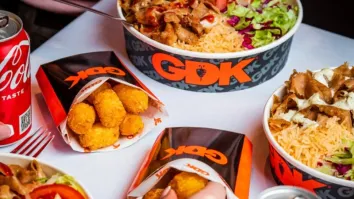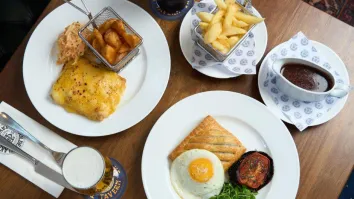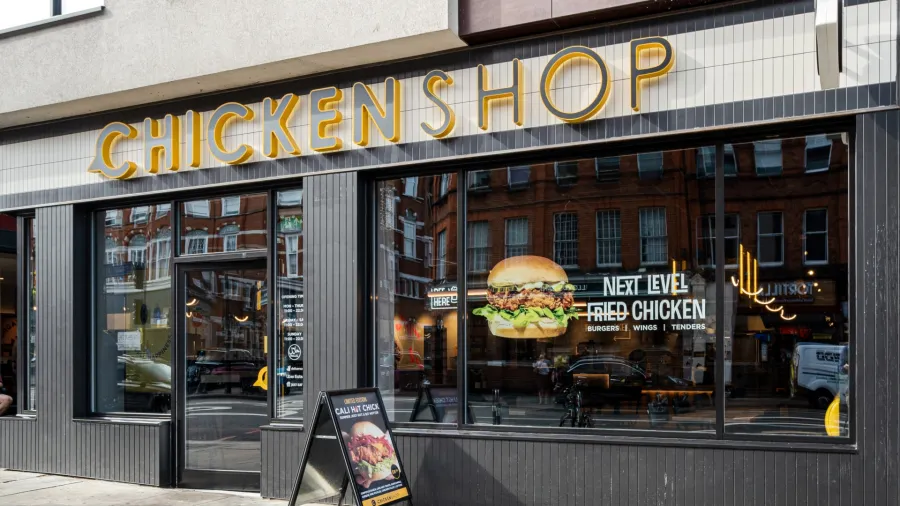
Inside Chicken Shop’s bold brand refresh to challenge multinational QSRs
The brand had to strip the existing brand away and re-lay a new groundwork.
When the fast-casual chicken brand, then known as Chik’N, asked global strategic branding specialist Harrison what would make them stand out amongst fast-food giants like McDonald’s and Burger King its answer was to change everything about the brand.
Harrison did this by stripping the existing brand away and re-laying the groundwork, even going as far as junking the old Chik’N name and renaming it the Chicken Shop. Harrison worked together with the Chik’N team by getting them to answer a questionnaire followed by subsequent workshops with Chik’N to get under the skin of the existing brand and better understand what the fast-casual chicken brand was known for and what its goals for the future were
But why the need to go this far?
In the UK, the popularity of chicken concepts, brands, and chicken-based meals is huge, with restaurants estimated to reach £2.7b in sales by 2027, according to a report by Mintel. Harrison knew that to compete with multinational fast-food brands, they needed to create a new QSR experience, one which was less functional and told a story to consumers that would resonate and engage them on a different level.
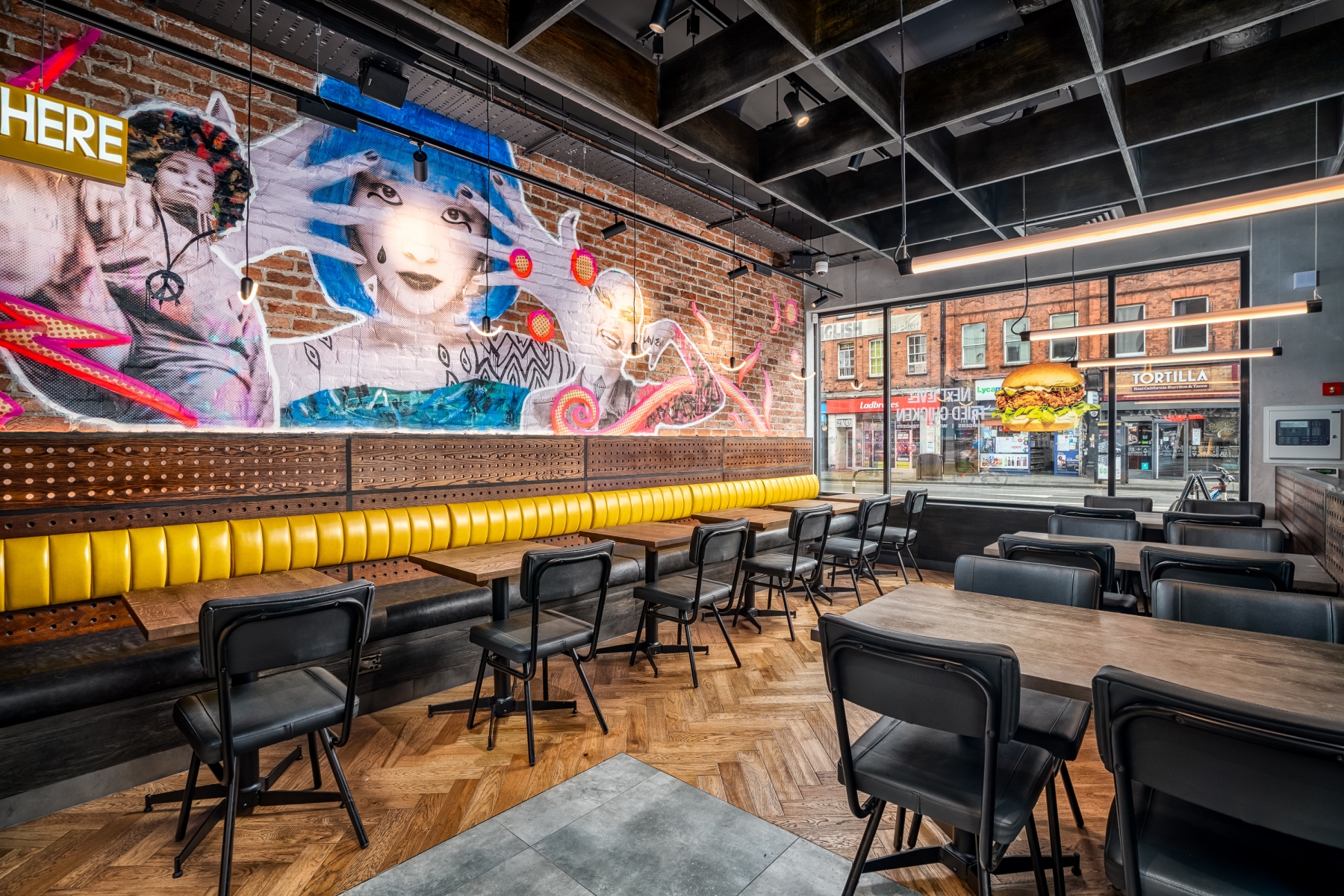
“Once we had worked with the client to lay the new brand foundations, it’s essentially a case of taking all the parts of the brand identity and story and puzzle piecing them together to create a coherent picture,” Richard Samarasinghe, Head of Business Development at Harrison told QSR Media in a brief interview.
Next level
Now with its new name, Chicken Shop wanted to showcase itself as the ‘next level chicken’. To do this, they needed to know which consumer segment they should be targeting.
After intense research using industry expertise supported by data from key sources, Harrison identified that one of the core target audiences for the new branding would be Gen-Zs.
“We know that for many people, especially for younger people, the quality of ingredients and freshness is of the utmost importance as they increasingly care about health and wellbeing. So, we needed to ensure these brand messages, alongside those emphasising speed of service, value, and uniqueness, shone through,” Richard explained.

Richard Samarasinghe, Head of Business Development at Harrison
In Barclay’s consumer report, Gen-Zs (ages 16 to 24) are spending higher proportions of their income on discretionary purchases compared to those over 25, with Gen-Z consumers spending twice as much more on fast-food & takeaways than older age groups.
“However, whilst the serious messages are important, we didn’t want Chicken Shop to stray too far into that space. To create a memorable experience, the team at Harrison always want to create a playful, fun, approachable environment for chicken lovers everywhere,” Richard said.
Brand personality
Once they identified the target audience, Harrison created a personality trait for the brand. Applying the Jungian archetype of the Jester to the brand’s identity which encapsulates traits like playfulness, friendliness, and projecting a welcoming and warm image, Harrison then went through the Customer Journey.
“In this process, we evaluate each step of the guest interaction, from the pre-journey such as a website or app all the way to the departure and any messaging post-visit. Through this process, we’re able to establish where and how the brand speaks to the guest as well as define the signature moments throughout the space that make for a consistent experience, no matter the location,” Richar explained.
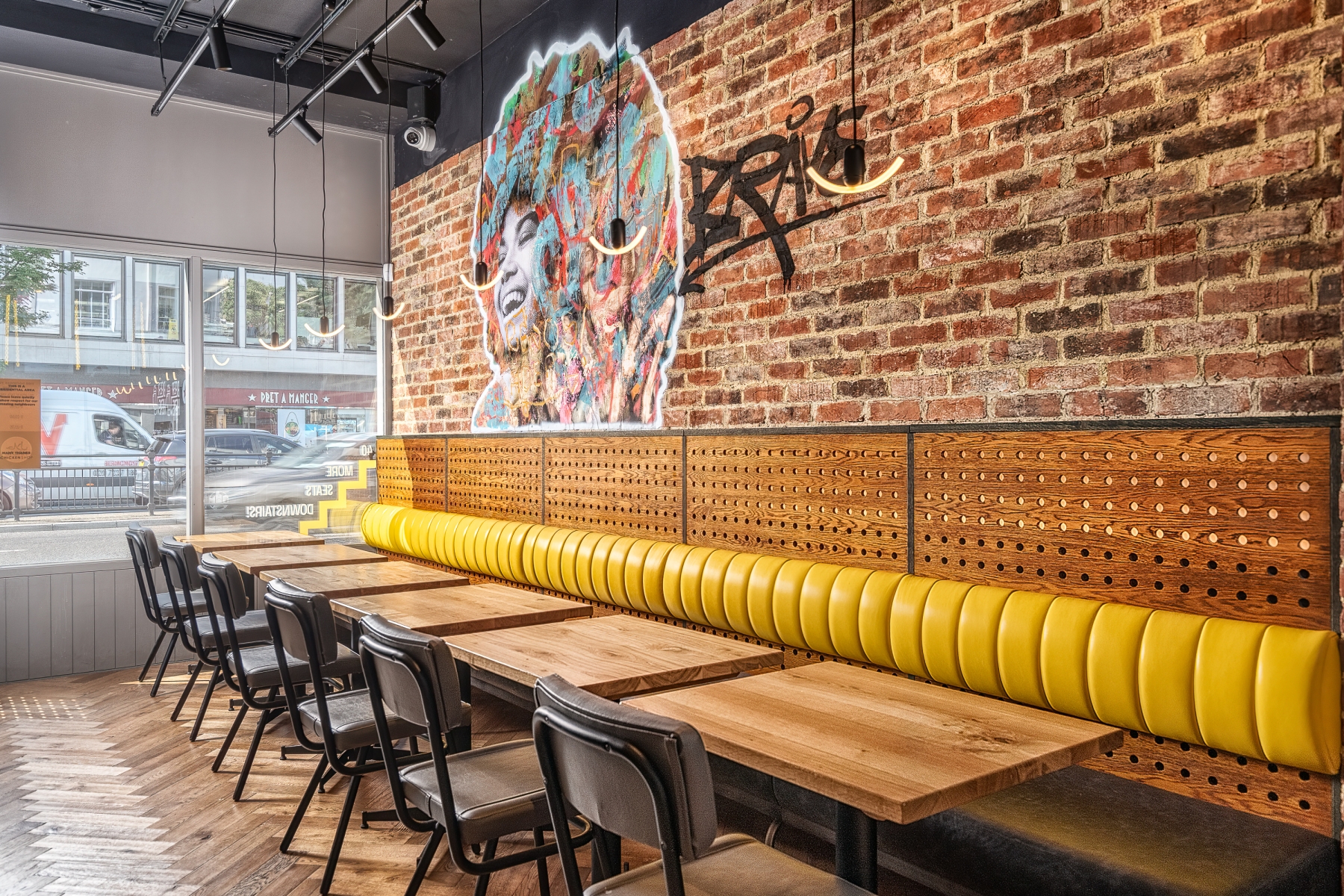
After establishing its personality, Harrison then helped Chicken Shop communicate its new branding to its customers by expanding and building its story.
“A brand pyramid helps to look at everything from the proposition to the personality to the essence of a brand. We take those and build them out – there is no point having brand ‘buzz’ words if we don’t put some weight and tangible deliverables behind them. From here we also need to look at how we can bring those different elements to life – be it through the logo, the menu, the overall creative and artwork on the walls of the restaurant. Even the door and the way you enter each Chicken Shop space are crucial as the first physical touchpoint for the customer,” Richard said.
Another example is the way Harrison updated the logo of the brand by incorporating small but quirky beaks on the C’s to emphasise the fact it is a chicken restaurant. The colour of the logo is also one associated with chickens, whilst being a warm and welcoming yellow, drawing people in.
Inside, the store showcases the origin story of the Chicken Shop, which was two hip-hop DJs who shared a passion for food, by incorporating graffiti, bright colours, and artwork, further enhancing the brand’s ‘playful independence identity’ whilst catering to the younger generation's taste.
“There is value in creating experiences and telling a story. QSR has the potential to be so much more than just a functional ‘grab and go’. Operators should be allowed to go against the perceived formula for QSR and have the courage to do things a little differently in order to stand out. At Harrison, we like to think we approach briefs in a unique way. Whether it’s QSR or fine dining, we always like to dig deep and delve into a project to find the story to tell, ensuring this forms part of the brand identity going forward. Whilst a brand can evolve to further draw out what makes it unique, it’s even more effective when storytelling can be woven into the creation of brand identity and strategy from the beginning,” Richard said.




